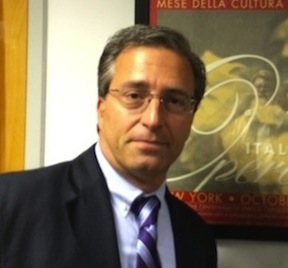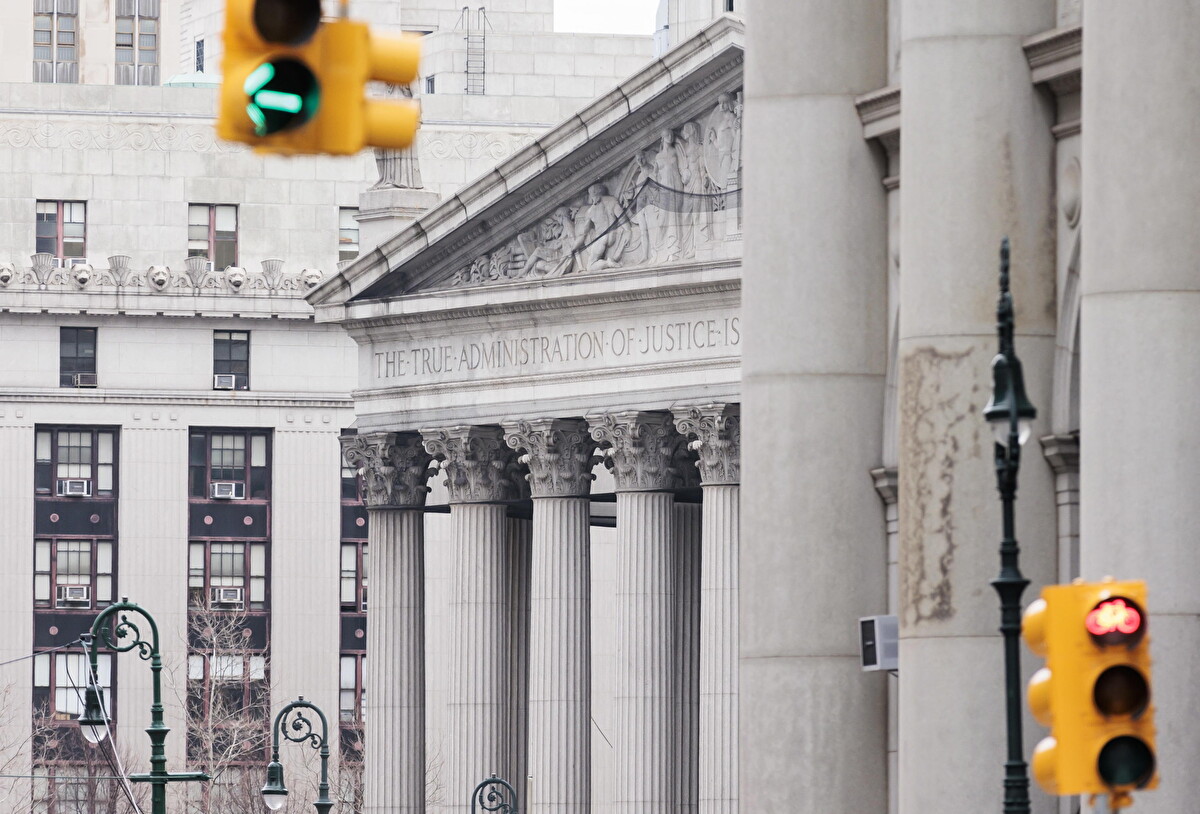As Hofstra University prepares a six-day conference on Frank Sinatra, it has given me an opportunity to re-think Sinatra’s relationship with Italy and Italian-American culture. While often depicted as a staunch defender of his rich ethnic heritage, I would argue that Sinatra had an ambiguous relationship with Italy and Italian-American culture.
Surely growing up in Hoboken as the son of immigrants in the early twentieth century, Sinatra was exposed to the tradition of Italian bel canto and lirica. New technology made the work of Enrico Caruso and others almost ubiquitous in Italian American communities. And listening to his famous phrasing, one must conclude that Sinatra had spent much time listening to this tradition. But unlike the other crooners such as Dean Martin (Dino Crocetti) and Jimmy Roselli, considering his tremendous body of work, Sinatra rarely sang in Italian. Instead, on stage and in the studio, he carefully scrubbed his singing of an Italian, Italian American or Hoboken accents, cultivating a cool Cole Porter lexicon. (At the bar, saloon and casino though, Sinatra paradoxically adopted the Hoboken tough-guy image that often got him in trouble with authorities, hecklers and gossip columnists.)
Although he visited and sang in Italy and was awarded the Italian American “Man of the Year” award by Italy’s ambassador in 1958, Sinatra seems to have exhibited the complicated relationship shared by many children of immigrants: having to both embrace the mother culture while distancing themselves from it to become fully “American.” For example: in a bootleg audio of Martin and Sinatra singing “Glad That We’re Italian,” the song is treated more as a joke than a serious statement of ethnic affiliation.
Perhaps all immigrants feel that in some sense they have “betrayed” the Patria, simply by leaving for other shores. There are two coping mechanisms in response: either a sentimental nostalgia or a clean break and fervent embrace of the new culture. Had the emigrants failed the Patria or had the Patria failed her sons and daughters?
His father, Anthony Martin Sinatra, had emigrated from Sicily. He was a saloonkeeper and the bar was called “Marty O’Brien’s” to draw in Irish customers. It was also the name under which Sinatra’s father attempted a career in the boxing ring. An only child and a sharp dresser on the insistence of his Genova-born mother Dolly, Sinatra was known on the streets of Hoboken as “Slacksie O’Brien.” We can only speculate how this may have cross-wired his first associations with Italian and Italian American culture. We do know (or read in Pete Hamill’s book Why Sinatra Matters) that when signed by Harry James, the orchestra leader suggested he change his name to “Frankie Satin.” Sinatra refused. The episode caused Sinatra to reflect on the bitter struggle of maintaining an ethnic identity in the face of crushing pressure from American popular culture and the inexorable dictates of the marketplace.
The historical, ethnographic and sociological studies – as well as many memoirs, diaries and autobiographies – are very clear. The immigrant experience is marked by the “double bind”: the necessity to maintain the old tradition while being constantly reminded and exhorted to “be American.”
Even in the field of politics Sinatra was emblematic of the trajectory of Italian Americans. His mother Dolly was a powerbroker in the Democratic wards of Hoboken and Sinatra broke with the tradition that entertainers didn’t enter the terrain of politics by endorsing first Franklin D. Roosevelt and then John F. Kennedy. Robert Kennedy’s very public snub of Sinatra – after the singer had worked tirelessly on JFK’s campaign and inaugural ball – is often cited as the reason for Sinatra’s rightward shift, all the way to Spiro Agnew, Richard Nixon and, late in life, Ronald Reagan. But Sinatra was also following the majority of Italian Americans as they made their way from various “Little Italies”, the working class, factories and trade unions and the Democratic Party to the middle class, white suburbia and the Republican Party.
In so many ways, Sinatra both confirmed and contradicted the most common stereotypes about Italian Americans in the twentieth century.
These issues – and many more – will be explored in an ambitious conference at Hofstra University this month to commemorate the centenary of Frank Sinatra’s birth. Of course there is much more to discover – above all the music, the marvelous and oftentimes miraculous music that was the soundtrack for much of twentieth-century American culture.
Featured are concerts, lectures, master classes and special guests. Students are joining the tribute with vocal and instrumental performances from The Great American Songbook. Guest speakers include Gay Talese, Pete Hamill, bassist Jerry Bruno, radio personality Mark Simone, musician Bucky Pizzarelli, Grammy-nominated singer Jane Monheit, entertainment reporter Sandy Kenyon, music critic and author Will Friedwald; and biographer (Sinatra, The Chairman) James Kaplan.
Exactly 17 years ago, Hofstra made history with a three-day conference honoring the “Chairman of the Board,” who had passed away earlier in 1998. Out of that conference, two books were published: Frank Sinatra: History, Identity and Italian American Culture (Edited by Stanislao Pugliese) and Frank Sinatra: The Man, The Music, The Legend (Edited by Jeanne Fuchs and Ruth Prigozy). This current conference at Hofstra revisits a man whose presence continues to loom large in the American imagination and popular culture.
All events in this Sinatra series are free and open to the public, with the exception of the Sunday, November 22, Peter B. Clark Memorial Scholarship Fund Concert. Due to space limitations, advance registration is required. Visit the Hofstra Cultural Center website or call 516-463-5669 for more information, including program locations.
Many featured events are preceded by The Sinatra Future, Hofstra vocal students performing selections from The Great American Songbook.
Event highlights include:
Tuesday, November 10, 7 p.m.
Two legendary writers: Gay Talese (Frank Sinatra Has a Cold and Other Essays) and Pete Hamill (Why Sinatra Matters) discuss “Sinatra As American Icon.”
Wednesday, November 11, 5 p.m.
Bassist Jerry Bruno interviewed by John Bohannon, host of WRHU-FM’s The Jazz Café and former correspondent for ABC, NBC and CBS Radio
Thursday, November 12, 4 p.m.
Sinatra was a champion of civil rights and a staunch supporter of Israel. A roundtable, “Racism, Civil Rights and Israel,” features Greg Dunmore, founding member of the National Association of Black Journalists; Shalom L. Goldman, professor of religion from Middlebury College, and Stanislao Pugliese, professor of history and the Queensboro UNICO Distinguished Professor of Italian American Studies. Also on the program is a screening of 1945’s “The House I Live In”, a 10-minute short opposing anti-Semitism, directed by Mervyn LeRoy and starring Sinatra. The film received an Honorary Academy Award in 1946.
7 p.m.
The Great American Songbook: Past, Present and Future is a panel with Hofstra Professor David Lalama; musician, record producer and songwriter David Finck; musical director, pianist and arranger Tedd Firth; Grammy-nominated jazz vocalist Jane Monheit; New Jersey City University Professor of Jazz History Arnold Jay Smith; and Debbi Whiting, president of My Ideal Music.
Wednesday, November 18
4 p.m.
“Lessons Learned From Sinatra” is a lecture and master class with longtime radio personality Mark Simone. Simone hosted numerous PBS specials on Sinatra and a long-running show on Sinatra for ABC Radio.
8 p.m.
Will Friedwald, music critic and author of Sinatra! The Song Is You: A Singer’s Art, presents “Sinatra: The Television Factor,” with an introduction by Robert Foster, executive director of the Hoboken Historical Museum.
Thursday, November 19
4 p.m.
A roundtable discussion on “Frank Sinatra and Italian American Culture” features University of Vermont Professor John Gennari; Joe Scognamillo and Sal Scognamillo of Patsy’s Restaurant in New York City (where Sinatra was a regular); author of Amore: The Story of Italian-American Song Mark Rotella; and Manhattan College English Professor Rocco Marinaccio.
7:30 p.m.
Celebrity journalist Sandy Kenyon, music critic and author Will Friedwald, Sinatra biographer James Kaplan, WKRB-FM host Ron Forman, and Bronx Opera Company Artistic Director Michael Spierman offer their views in the panel “Assessing Frank Sinatra.”
Sunday, November 22
4 p.m.
Sit in on an open rehearsal and master class with jazz legend Bucky Pizzarelli, guitar, who played and toured with Sinatra. Pizzarelli is serving as Hofstra’s D’Addario Foundation Visiting Artist for this series.
7 p.m.
The Peter B. Clark Memorial Scholarship Fund Concert features guest artist Bucky Pizzarelli, as well as the talents of the Hofstra Jazz Ensemble and the Hofstra Vocal Jazz Quartet and Singers. This performance takes place at The Helene Fortunoff Theater. Tickets are $10, $8 for senior citizens (over 65) or non-Hofstra students with ID. Tickets are available at the Hofstra Box Office or at Hofstratickets.com.
 * Stanislao Pugliese, PhD, is Professor of History and Queensboro Unico Distinguished Professor of Italian Studies at Hofstra University, stanislao.pugliese@hofstra.edu
* Stanislao Pugliese, PhD, is Professor of History and Queensboro Unico Distinguished Professor of Italian Studies at Hofstra University, stanislao.pugliese@hofstra.edu
For more information contact also: Ginny Greenberg Director, Public Relations Hofstra University 516-463-5611, 516-463-6819 ude.artsfoh@grebneerg.ynnig.











